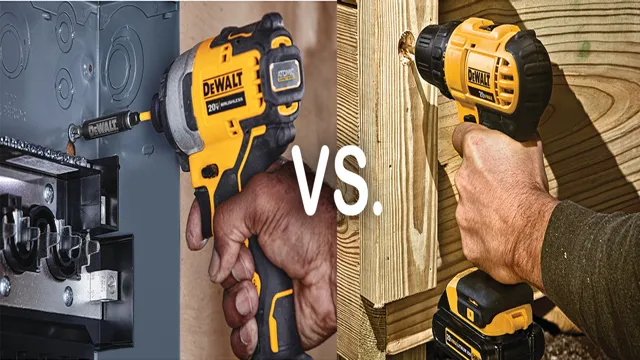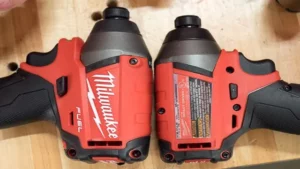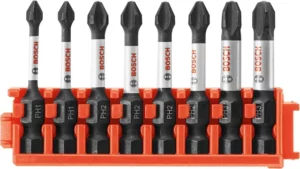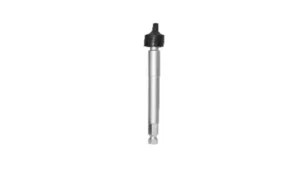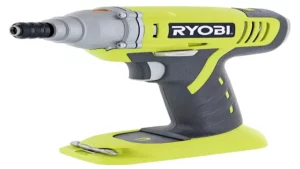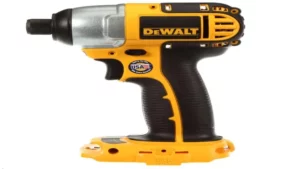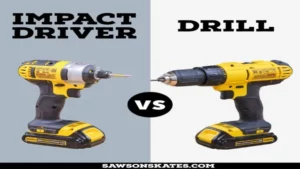Have you ever heard people raving about impact drivers but wondered why you should choose one over a drill? Both tools can be incredibly useful for DIY projects and construction jobs, but they have different strengths and weaknesses. It all comes down to what you’re using them for and what your priorities are. Think of it like choosing between a sports car and an SUV – they might both get you from point A to point B, but they have different features and are designed for different purposes.
In this blog, we’ll delve into the benefits of impact drivers and help you decide if they’re the right tool for your next project.
What is an Impact Driver?
If you’re wondering why use impact driver over drill, the answer lies in the design of the tool. While drills are ideal for drilling holes and driving screws into softer materials, an impact driver is designed for tougher jobs that require more torque and power. It is a handheld tool that features a hexagonal chuck that allows it to accept a variety of bits.
An impact driver uses a combination of rotational force and concussive blows to drive screws and bolts deep into wood or metal. The impact driver’s torque action enables you to drive screws with more speed and precision. Additionally, the tool features a quick-release chuck that allows you to switch between bits easily, making it perfect for DIYers who work with multiple types of screws and materials.
Overall, an impact driver is the perfect tool for tackling heavy-duty jobs where a drill doesn’t provide enough power. So why use an impact driver over a drill? For those tougher jobs that require more torque and power, an impact driver will get the job done faster and with greater precision.
How Does an Impact Driver Work?
An impact driver is a power tool that is commonly used by DIY enthusiasts and professionals. This tool works by delivering high-torque output with minimal exertion, which makes it easier to drive screws and other fasteners into tough materials. An impact driver is different from a regular drill because it uses rotational force, instead of merely relying on a motor to rotate the bit.
When the impact driver rotates, an impact mechanism engages, which creates sudden bursts of force that drive the bit forward with incredible speed and power. This burst of energy helps the driver to overcome tougher materials like hardwoods or dense timber. Additionally, the impact driver has a hex-shank chuck that allows for quick and easy bit changes, which makes it a versatile tool to have in any workshop.
If you need a powerful, efficient, and versatile tool for your DIY projects, then an impact driver is an excellent choice.
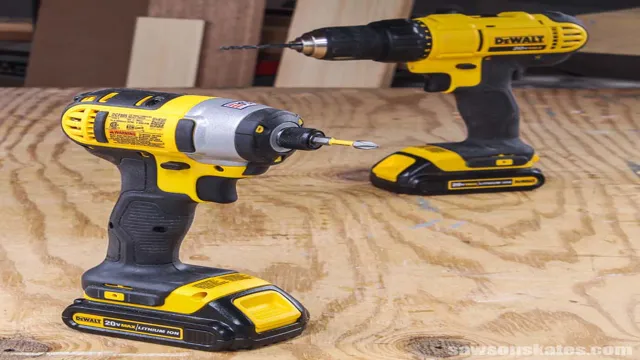
What Jobs are Best Suited for an Impact Driver?
An impact driver is a powerful tool used for driving screws, bolts, and other similar materials into surfaces. It delivers a high level of torque with minimal effort and is best suited for heavy-duty jobs and professional uses. There are many jobs that require an impact driver, such as construction, carpentry, and automotive work.
This tool is particularly useful in tasks that involve fastening materials to wood, metal, concrete, or brick. The powerful driving action and high speed of the impact driver make it the perfect tool for projects that require precision and efficiency. Overall, an impact driver is an essential tool for anyone working with screws, bolts, and other related materials, providing a reliable and efficient way to get the job done quickly and effectively.
The Advantages of Using an Impact Driver
If you’re wondering why use an impact driver over a drill, there are many advantages to consider. Firstly, impact drivers have a high torque output, which makes them perfect for driving long screws effortlessly. Unlike drills that rely on their power to work, impact drivers have a rotational force that works with an additional percussive force that works like a hammer blow to increase the rotating force.
Impact drivers are also more compact and lightweight compared to drills, which makes them perfect for tight spaces and long projects. Another advantage of impact drivers is their battery life. Impact drivers tend to consume less energy compared to drills, making them perfect for long hours of work without interruption.
Lastly, impact drivers come with quick-release chucks that allow you to switch between the bits easily. In conclusion, when it comes to versatility, power, performance, and convenience, an impact driver over a drill is an excellent choice for any DIY enthusiast or a construction project.
Greater Torque
If you’re someone who enjoys DIY projects or spends a lot of time working with screws and bolts, then you already know the importance of having the right tools for the job. One of the most versatile and essential tools you can add to your collection is an impact driver. This tool provides greater torque than your typical drill, making it easier to drive screws and bolts into tough materials like wood and metal.
With an impact driver, you no longer have to worry about stripped screws or frustratingly difficult drilling tasks. Plus, compared to traditional drills, impact drivers are more compact and lightweight, making them easier to use for extended periods of time. So, if you want to make your DIY projects or work tasks easier and more efficient, consider investing in an impact driver today.
Less Strain on Your Arms and Wrists
If you’re tired of feeling the strain in your arms and wrists after using your drill, it might be time to consider an impact driver. One of the major advantages of using an impact driver is the reduced stress it puts on your body. Unlike traditional drills that require you to apply constant pressure and force, an impact driver utilizes rotational force to power through even the toughest materials.
This means less strain on your arms and wrists, making it easier and more comfortable to tackle bigger projects without feeling exhausted afterwards. So if you’re looking for a tool that will give you the power and precision you need without causing unnecessary wear and tear on your body, consider investing in an impact driver for your next DIY project.
Faster Speed and Increased Efficiency
As a construction worker, time is of the essence, and I’m always looking for ways to increase my efficiency on the job. That’s why I switched to using an impact driver, and I can confidently say it’s been a game-changer. The main advantage of using an impact driver is the faster speed it offers.
Compared to a regular power drill, an impact driver can deliver up to three times more torque, allowing me to drive screws and bolts quicker and with less effort. This, in turn, means I can finish projects faster, ultimately increasing my productivity. The increased speed also helps prevent fatigue, allowing me to work for longer periods without feeling exhausted.
Overall, switching to an impact driver has been one of the best decisions I’ve made as a construction worker.
When to Use a Drill Instead
If you’re wondering why use an impact driver over a drill, it’s because of the different ways they deliver rotational force. An impact driver is designed to deliver sudden bursts of high torque, making it very effective for driving screws and nuts in tough materials, including thick wood and metal. While a drill can handle a range of tasks, including drilling holes and driving screws, it delivers a steady flow of torque.
This makes it less effective for difficult tasks, as it cannot penetrate and drive through dense or hard materials like the impact driver can. Therefore, using an impact driver over a drill can save time and effort when tackling tougher, heavy-duty projects.
Drilling in Wood or Plastic
If you’re working on a woodworking or plastic project, you might think that drilling is the best option for creating holes. But, there are times when using a drill might not be the best choice. For example, if you’re working with thin materials or delicate pieces, a drill can easily damage the surface.
In such cases, it’s better to use a punch to create an indentation, and then use a small drill bit to create the hole. Additionally, if you’re working with a material that is prone to splitting, such as plywood, it’s essential to use the right type of drill bit and to drill carefully to avoid any damage. Drilling in wood or plastic requires careful consideration, especially if you want the end result to be a precise and clean hole.
One of the benefits of using a drill is that it allows for consistent hole size, which is especially important if you’re working with interlocking pieces or components. However, it’s important to remember that drills can generate a lot of heat, especially in plastic materials. This can cause melting and deformation, ruining the project altogether.
Therefore, it’s important to start with a low speed and to increase gradually as you work. In conclusion, drills are an excellent tool for creating holes in wood and plastic, but it’s important to use them carefully and only when necessary. By understanding the characteristics of the material you’re working with, you can determine whether a drill is the best option or if you need another tool, like a punch.
Remember, precision is key, and taking your time to create clean and accurate holes will ensure the success of your project.
Smaller Jobs or DIY Projects
When it comes to smaller jobs or DIY projects, using a drill can save you time and effort compared to using manual tools like a screwdriver or hammer. If you’re hanging a picture frame, assembling furniture, or installing a new shelf, a drill can come in handy for making pilot holes and driving screws quickly and easily. Plus, drills come in various sizes and power options, so you can choose one that fits your needs and budget.
Whether you’re a seasoned DIYer or a beginner tackling your first home improvement project, a drill can be a valuable tool to have in your toolkit.
Conclusion
If you’re looking for a tool that’s tough enough to handle the toughest job and smart enough to tackle any challenge, look no further than the impact driver. With its powerful torque and adaptable design, an impact driver offers more control and precision than a regular drill ever could. It’s like having a superhero in your tool kit – and who doesn’t want a bit of extra muscle when it comes to DIY?”
FAQs
What is the difference between an impact driver and a drill?
An impact driver is designed to provide more torque and power for driving screws and bolts, while a drill is primarily meant for drilling holes.
Can an impact driver be used for drilling holes?
While an impact driver is primarily designed for driving screws and bolts, it can also be used for drilling small holes when equipped with the right drill bit.
Will an impact driver work on all types of screws and bolts?
Yes, an impact driver can work on a variety of screws and bolts, including heavy-duty ones that may be difficult to drive with a regular drill.
How does an impact driver make the job easier/faster than a drill?
An impact driver delivers more torque and power with less effort, making it easier and faster to drive in screws and bolts, especially in tough materials like hardwood.
What kind of projects or tasks are best suited for an impact driver?
An impact driver is ideal for tasks that involve driving a lot of screws or bolts, such as building a deck, assembling furniture, or hanging drywall.
Can an impact driver be used by a beginner or is it more suited for professionals?
An impact driver can be used by anyone, regardless of skill level. It is easy to use and can make tasks like driving screws and bolts much quicker and easier.
Will using an impact driver damage the screws or bolts?
No, an impact driver is less likely to strip or damage screws or bolts than a regular drill because it provides more power and torque without putting as much strain on the screw or bolt.
